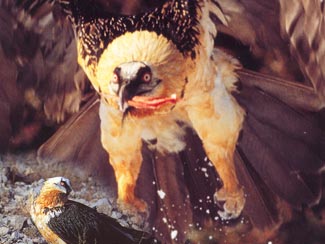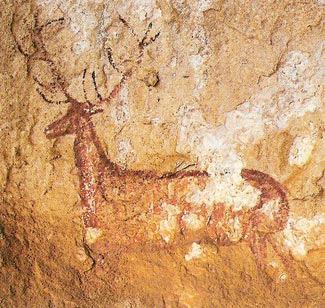Sierra de Guara: Rural and adventure tourism in Huesca
The Sierra and Canyons of Guara Nature Reserve
The Sierra de Guara is situated in the province of Huesca, consisting of a mountainous massif which acts as a link between the Pyrenees and the Hoya (Vale) de Huesca. On December 27th, 1990 this pre-pyrenean area was declared “Nature Reserve of the Sierra and Canyons of Guara” by the Government of Aragon, with the objective of:
- Guaranteeing the functioning of ecological systems.
- Protecting and conserving the natural (flora and fauna) and cultural resources.
- Regulating the uses of the area and the activities which take place therein.
- Promoting environmental education.
- Supporting the socio-economic development of the local population.
- Its being a place of recreation and relaxation.
 Sierra de Guara. Geology
Sierra de Guara. Geology
The particular climate conditions, together with vast platforms of limestone and conglomerate rock, have given rise to the appearance of caves, chasms, galleries, the emergence of underground rivers and springs, and imposing vertical walls. This complex is intimately bound to the shaping of the ravines and gorges which have been the engine for the strong economic growth of the region and the future of the inhabitants of the Sierra de Guara.
A great number of visitors are continuously being attracted by the presence of the spectacular and majestic rivers and gorges which make up the Sierra de Guara. The rivers with the most important fluvial basins are the Flumen, Guatizalema, Alcanadre, Iguala and Vero, and the most recognized gorges and descents are the canyon of the Formiga, Gorgas Negras, Upper Mascun, Otin, the descent of the Peonera, the canyon of San Martin de le Valdonsera, the Oscuros de Balces, the Cueva Cabrito gorge, the River Vero and some of its tributaries such as Basender, Portiacha, Lumus and Fornocal.
 Sierra de Guara. Climatic Features
Sierra de Guara. Climatic Features
The geographic location of the Sierra de Guara, like a transition zone between the cold temperatures of the Pyrenees and the continental climate of the Ebro depression, is the determining factor for the appearance of a large number of microclimates, very specific to each area. Broadly speaking, the average annual temperature is around 12 degrees, with the possibility of its reaching - 14 degrees with heavy frost in winter, while in summer it can soar to 40 degrees. The majority of rainfall occurs in autumn and spring, winter and summer being the drier seasons.
 Sierra de Guara. Typical Flora and Fauna
Sierra de Guara. Typical Flora and Fauna

On the northern slopes large areas are covered by groves of gall-oak, changing with altitude to woods of Scots pine and beech. At even greater heights we find the black pine and some silver fir.
On the south-facing slopes Holm Oaks form the forest par excellence. Moreover, in the whole of the Nature Reserve, one of the most important vegetable formations is the vast array of shrubbery, herbs and scrub.
It would be worth highlighting some very important species which we find in more confined spaces, above all in the rocky walls of ravines or cliffs where moisture abounds:- The Petrocoptis Guarensis (endemic to the Sierra) which lives in the ceilings or limestone overhangs of the vertical rock faces. The Bear’s Ear/Pyrenean Violet (Ramonda Myconi), striking for the intense violet of its flowers and the abundance of hairs on its leaves, completely covers the stony cornices. And the King’s Crown (Saxifraga Longifolia), with its long clusters of beautiful white flowers, which we can see hanging from the rocky walls.
The same arrangement of sheer cliffs makes it possible, on the other hand, for numerous species of rock-nesting birds to breed - such as the griffon vulture (very abundant nowadays in the Sierra), the lammergeier and the golden eagle (in lesser measure).
Amongst the mammals those that stand out are the wild boar, fox, wild cat, dormouse and the frequent marten. In the crystal-clear waters of the springs and rivers the common trout abounds and with a bit of luck we will be able to find some examples of the Pyrenean newt.
 Sierra de Guara. Cave Painting
Sierra de Guara. Cave Painting

The presence of our human ancestors is seen in Guara in the remains of cave art and megalithic monuments. For millennia, prehistoric societies expressed their culture, their ideas and feelings, their creative and artistic character on the walls of the Vero and its gorges.
Human figures, animals, scenes, enigmatic signs…. transport us to the dominions of mystery and curiosity for the unknown.
The Culture Park of the River Vero, with more than 60 painted caves, contains one of the most extraordinary collections of Prehistoric Cave Art. Here in the Sierra de Guara, in a small geographic area and in a spectacular environment, are gathered all the classic styles of the Prehistoric Iberian Peninsula: Paleolithic, Levantine and Schematic art.

